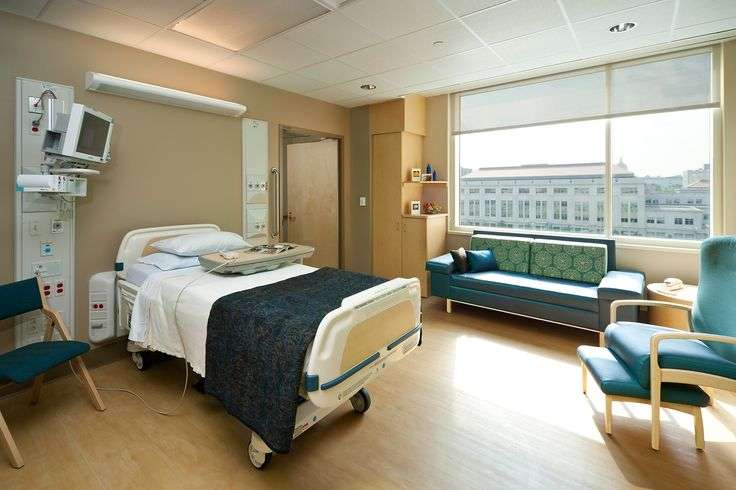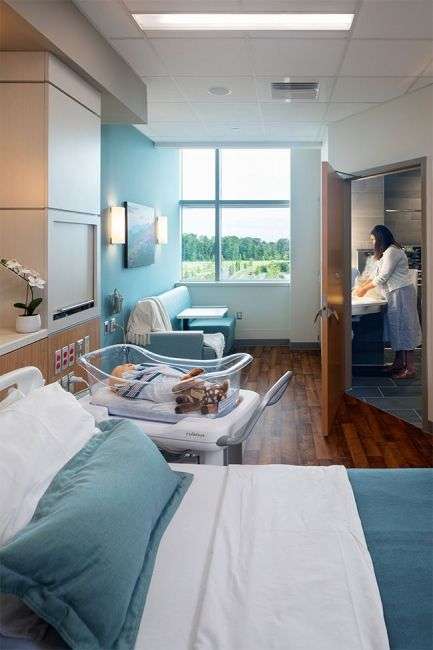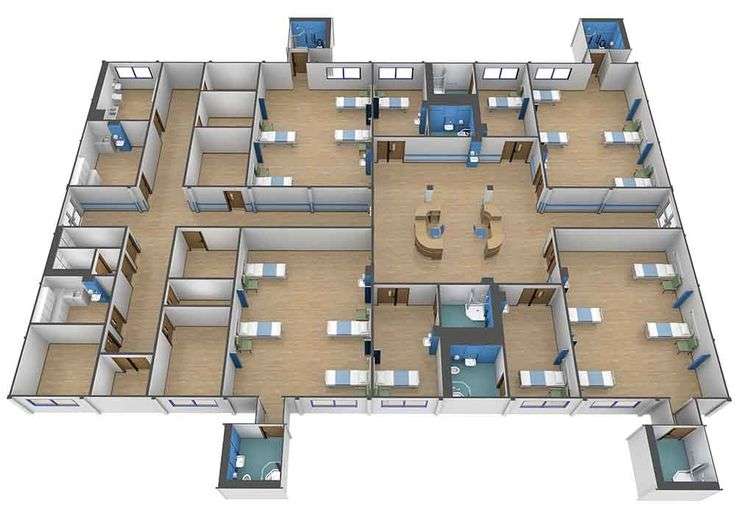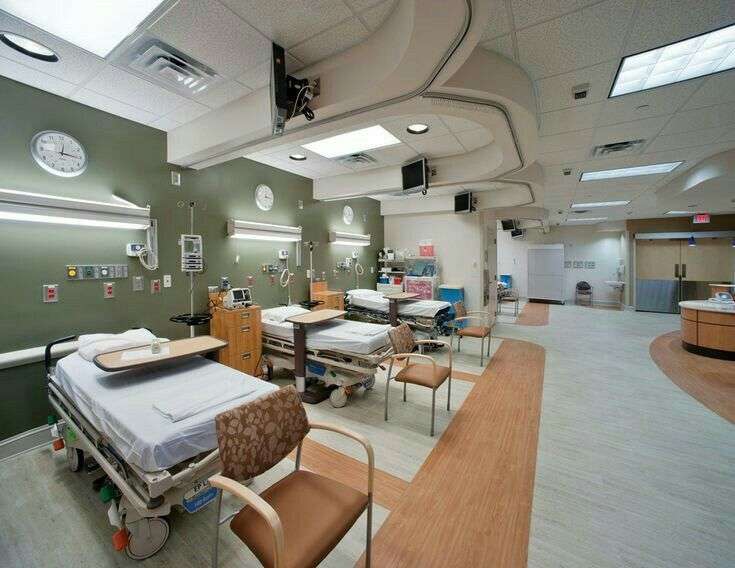
Hospital Project: Proven Strategies for Budgeting in Healthcare
January 10, 2025
10 Tips for Better Construction: Safe & Efficient Design
January 25, 2025Infection control is one of the most critical aspects of hospital interior design. In healthcare environments, the need to protect patients, staff, and visitors from the spread of infections is paramount. The hospital design significantly reduces the risk of healthcare-associated infections (HAIs) by selecting the right materials, layouts, and technologies that facilitate cleanliness and minimize cross-contamination. At Hospertz India Pvt. Ltd., we understand the importance of designing healthcare interiors with infection control as a top priority. Below, we explore key design strategies, material choices, and layout considerations contributing to effective infection control in hospital interiors.
1. Material Selection for Infection Control
The materials used in hospital interiors directly impact hygiene and cleanliness. Choosing non-porous, easy-to-clean surfaces can significantly reduce the risk of infection transmission. At Hospertz India Pvt. Ltd., we recommend using the following materials for different areas of the hospital:
- Non-porous Flooring: Materials like vinyl, epoxy, and seamless rubber flooring are excellent hospital choices. These materials do not absorb moisture or bacteria, making them easier to clean and disinfect. Unlike carpet or porous materials, which can trap dirt and pathogens, non-porous floors can be disinfected regularly without compromising their integrity.
- Antimicrobial Surfaces: The use of antimicrobial coatings on high-touch surfaces like door handles, railings, and countertops helps prevent the growth of harmful bacteria and viruses. These surfaces are particularly useful in high-traffic areas like waiting rooms, corridors, and patient rooms.
- Wall Materials: Hospitals require durable wall finishes that are resistant to bacteria and easy to sanitize. We recommend smooth, wipeable wall materials like epoxy coatings, stainless steel, and ceramic tiles for areas prone to contamination. These materials not only ensure hygiene but also enhance the aesthetic appeal of hospital interiors.
- Touch-Free Fixtures: Installing touch-free fixtures such as faucets, soap dispensers, and door openers reduces contact with surfaces, lowering the risk of cross-contamination. The incorporation of motion-sensor technology can be particularly beneficial in high-traffic areas such as bathrooms, kitchens, and patient rooms.

2. Designing Layouts for Infection Control
The layout of a hospital directly influences the ease of cleaning and the ability to control the spread of infections. Proper space planning can improve workflow, limit patient contact, and minimize areas where infections may spread. At Hospertz India Pvt. Ltd., we incorporate the following layout strategies to promote infection control:
- Zoning and Segregation: One of the most effective ways to prevent cross-contamination is by dividing the hospital into distinct zones. For example, creating separate zones for clean and dirty activities can minimize the risk of infection spread. Isolating patient care areas from administrative and non-clinical spaces helps contain pathogens within controlled zones. In the patient care zones, isolation rooms with negative pressure can further reduce the spread of airborne pathogens.
- Easy-to-Navigate Flow Paths: The hospital layout should minimize unnecessary foot traffic and streamline the movement of patients, staff, and visitors. A well-organized layout ensures hospital staff can move efficiently between areas without passing through high-risk zones. Additionally, minimizing patient contact with common areas helps reduce the risk of contamination.
- Centralized Infection Control Stations: Strategic placement of hand sanitizing stations, cleaning equipment, and protective gear dispensers is essential in ensuring infection control measures are easily accessible. Placing these stations at key intersections, near elevators, and within patient rooms encourages their use, helping to maintain hygiene standards throughout the facility.
3. Ventilation and Airflow Design
Proper ventilation is crucial for infection control in hospital interiors. Poor air circulation can contribute to the spread of airborne diseases, especially in crowded or confined spaces. At Hospertz India Pvt. Ltd., we incorporate advanced ventilation systems to ensure optimal airflow and reduce infection risks.
- HEPA Filters: High-efficiency particulate Air (HEPA) filters in air handling systems help trap airborne pathogens and allergens, reducing the risk of transmission. These filters are particularly important in operating rooms, intensive care units (ICUs), and isolation rooms.
- Natural Ventilation: Where possible, incorporating natural ventilation can improve indoor air quality and contribute to infection control. Operable windows or ventilated courtyards can provide fresh air and help regulate temperature and humidity levels, reducing the growth of pathogens.
4. Lighting and Acoustics for Infection Control
Lighting and acoustics are often overlooked in infection control design but play an important role in creating a comfortable and hygienic environment.
- UV-C Lighting: Ultraviolet (UV-C) light is proven to kill bacteria and viruses. Incorporating UV-C lighting in key areas like operating rooms or patient care spaces can assist in disinfection between uses.
- Soundproofing: Infection control extends to mental health and patient well-being. Noise reduction in healthcare spaces promotes better recovery by reducing stress and improving sleep. Acoustical materials in patient rooms and corridors help control noise, ensuring a peaceful environment conducive to healing.

Conclusion
Designing hospitals with infection control at the forefront is essential for the health and safety of all occupants. By choosing the right materials, creating effective layouts, ensuring proper ventilation, and considering factors like lighting and acoustics, Hospertz India Pvt. Ltd. helps healthcare facilities reduce the risk of infections and maintain a clean, safe environment. With our expertise in hospital design and construction, we not only ensure that every aspect of the hospital interior supports infection control but also, promote patient comfort and staff efficiency.
Dr. Vishal Jadhav, Director
hospertz@gmail.com
+91 9967512705/ 9820833149




